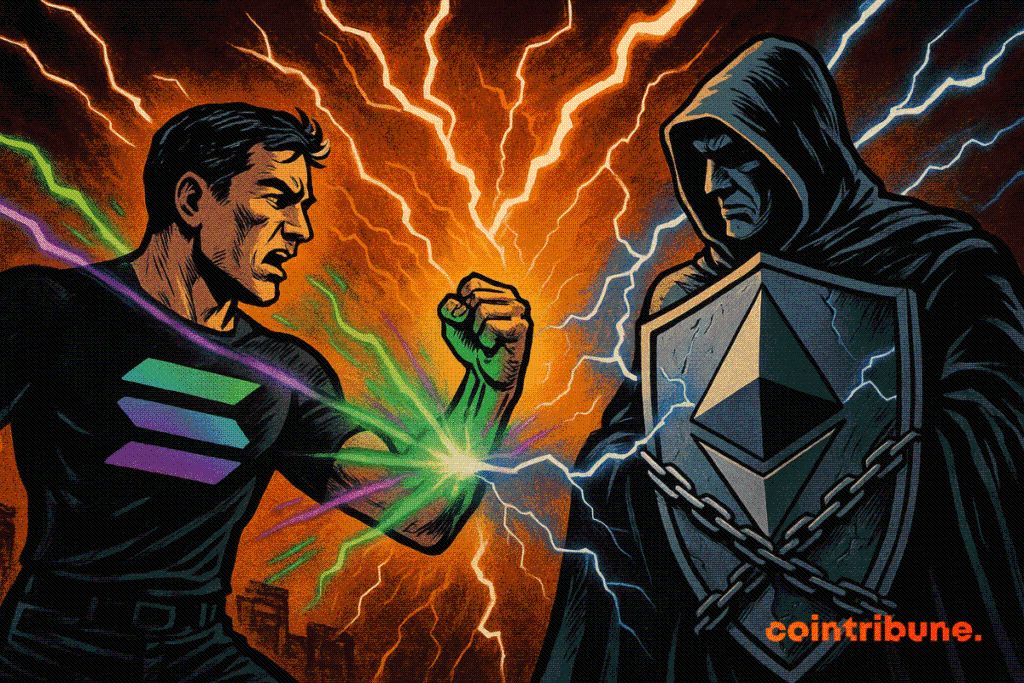The co-founder of Solana challenges the security of Ethereum Layer-2s
Ethereum, a true peaceful digital paradise? Behind the promises of decentralization, some see cracks in the armor. Anatoly Yakovenko, co-founder of Solana, throws a stone in the pond. In a series of exchanges on X, he claims that Ethereum scaling solutions, far from being invulnerable, hide critical flaws. The battle of narratives in the crypto universe is more active than ever. And at the heart of the ring: the security of bridges, multisigs, and the famous promise of ETH L1’s security inheritance.

In brief
- Yakovenko denounces multisigs capable of modifying L2 bridges without any user transparency.
- More than 120 Layer-2s swarm around Ethereum, creating fragmentation, confusion, and security risks.
- Binance Research warns: L2s shrink the revenue of Ethereum’s main layer with their fees.
- Some actors defend these networks, arguing they strengthen the crypto ecosystem through technological diversity.
Can the Ethereum ecosystem really guarantee the security of its Layer-2s?
The criticism by Anatoly Yakovenko, a major promoter of Solana’s Saga smartphone, quickly sparked the crypto-sphere. For him, the illusion is persistent: the Layer-2 (L2) are not protected by Ethereum, despite what their supporters claim. These secondary networks have auditability flaws, a massive attack surface, and above all, governance that is still too centralized. The use of upgrade multisigs, in his view, destroys any real guarantee.
In a sharp tweet, Yakovenko states: “All existing second-layer (L2) solutions have a permissioned multisig that can override the bridge contract without notice“.
His example? The ETH token transferred to Solana via Wormhole presents, according to him, the same risks as ETH used on Base, an L2 signed by Coinbase. Yet these two systems generate as much revenue for ETH L1 stakers. In other words: the L2 model does not rest on as solid a foundation as one might think.
But some, like @lex_node, counter: Ethereum offers the ability to force the inclusion of transactions in L2 blocks. And thus a form of native security.
Crypto multiplication or fragmentation? The L2 boom raises questions
The crypto universe has more than 120 Layer-2s verified according to L2Beat, and 29 more await evaluation. A wealth? Not for everyone. Adrian Brink (Anoma) sees it as excess. Igor Mandrigin (Gateway.fm), on the other hand, celebrates necessary diversity. And Anurag Arjun (Polygon) highlights their value as high-throughput blockchains. But this proliferation has a price: Binance Research warns of a cannibalization of Ethereum base layer revenues.
In the sights: the ultra-competitive fees of L2s, which fragment liquidity and divert ETH L1 transactions. Yakovenko, again, goes further: he even proposes building a bridge to Ethereum that would make… Ethereum itself an L2 of Solana. A technical jab, but revealing of tensions over network sovereignty.
Some truths in numbers
- 129 active Ethereum Layer-2s in October 2025 according to L2Beat;
- 1 centralized multisig on each L2 according to Yakovenko;
- 1 $ revenue L1 per ETH moved on Base or Wormhole;
- 0 need to change the ETH protocol for the bridge to guarantee the exit.
While Yakovenko shakes certainties, Charles Hoskinson – founder of Cardano – boldly predicts the end of Ethereum within 15 years . A provocation or a prophecy to ponder.